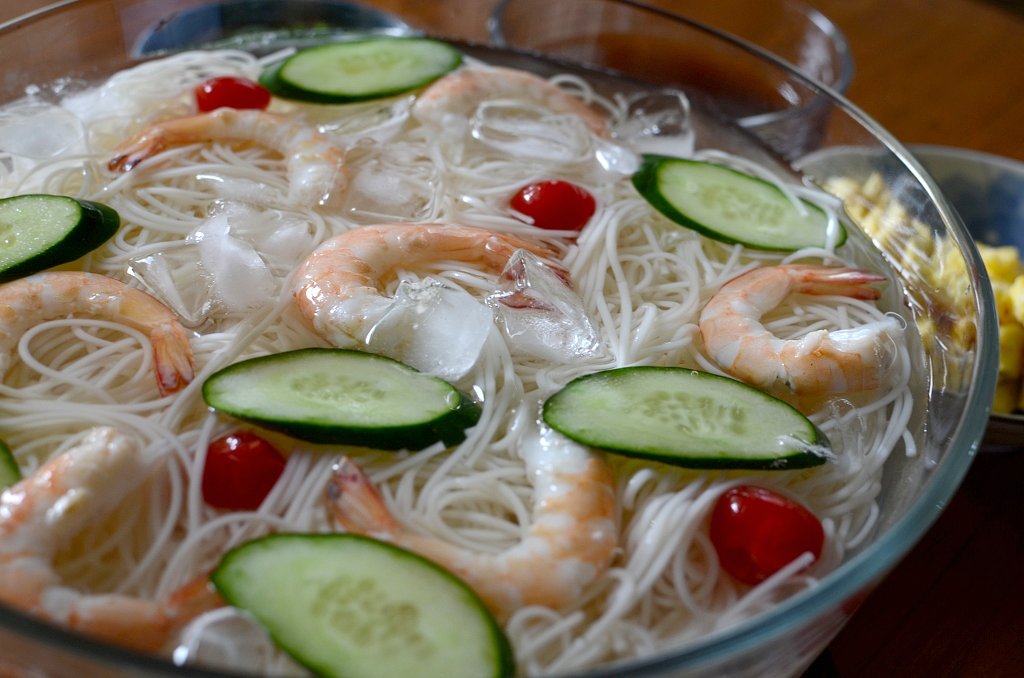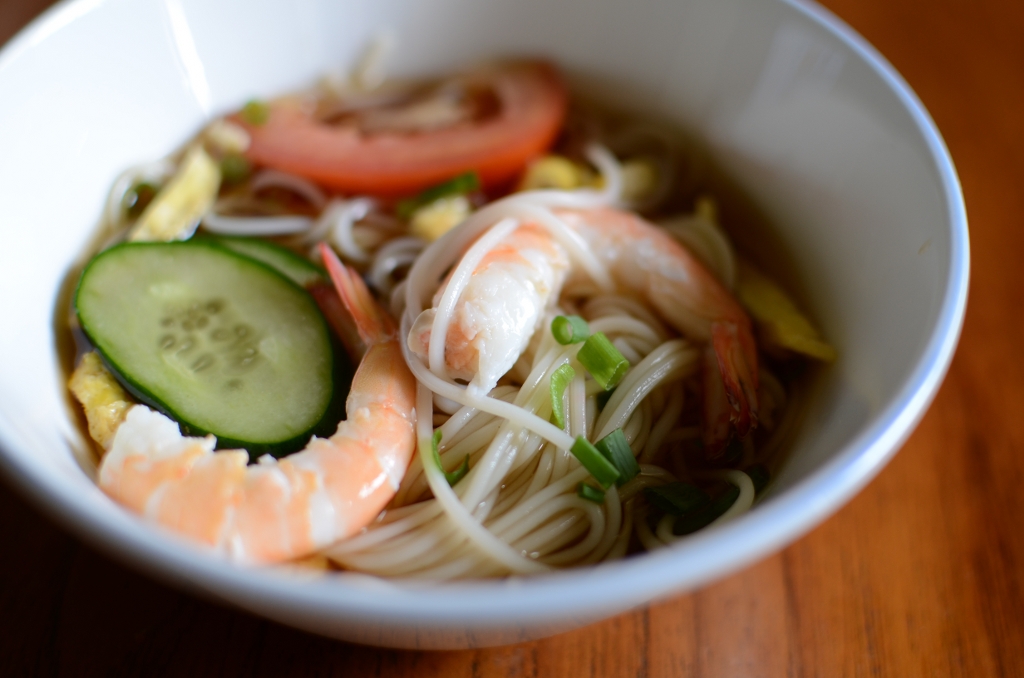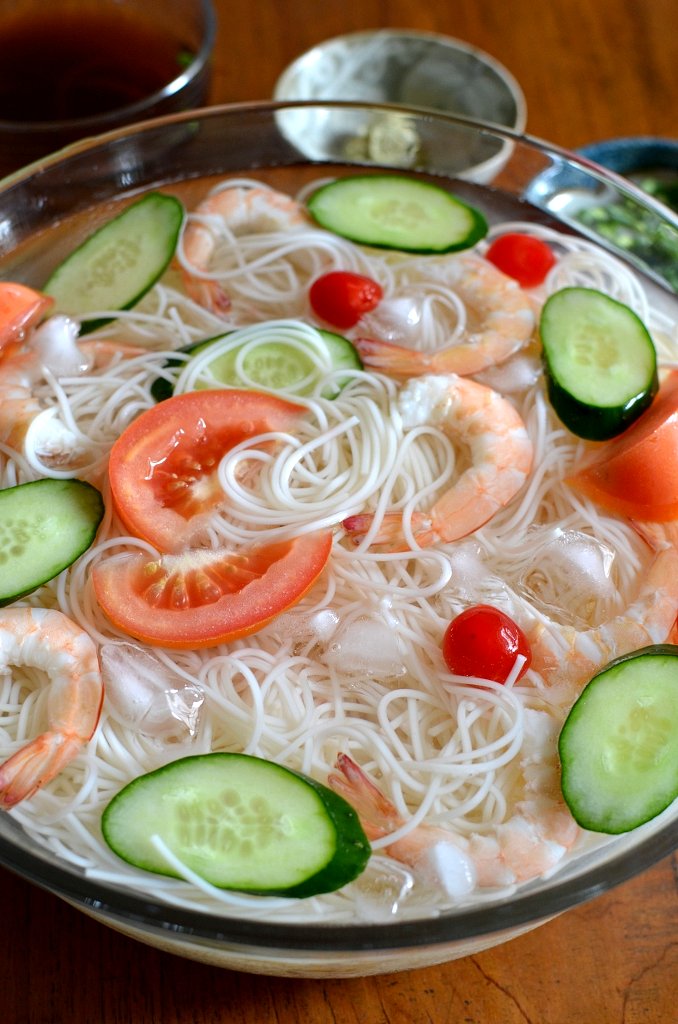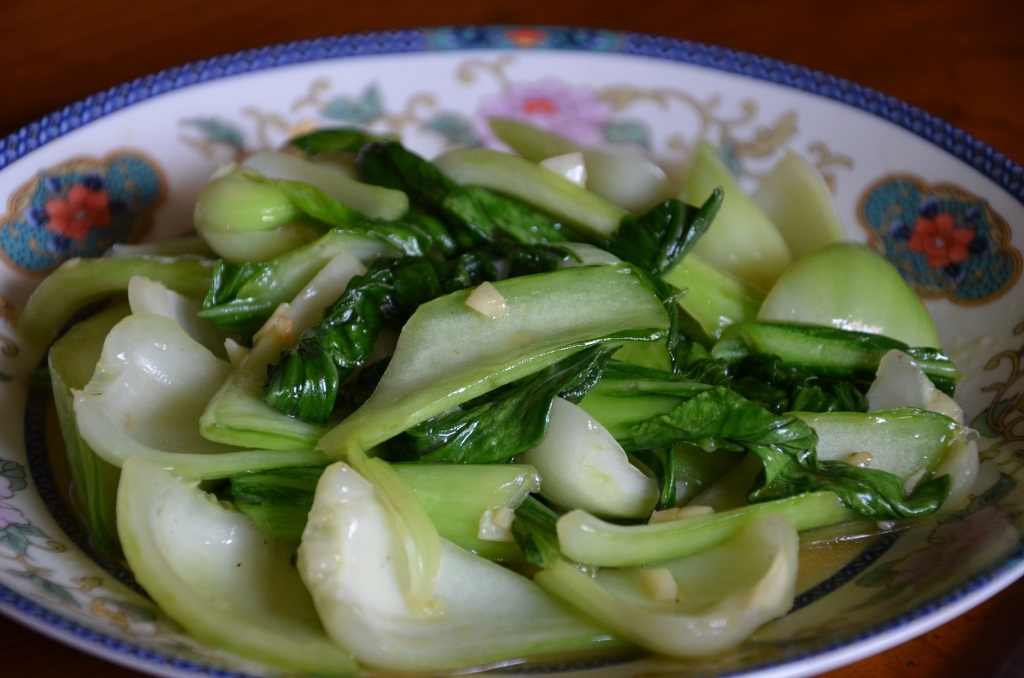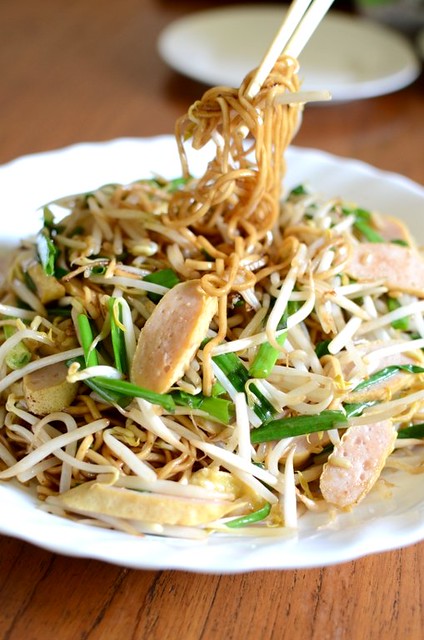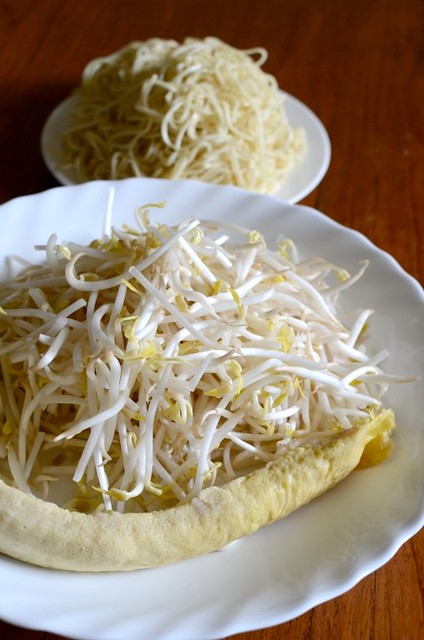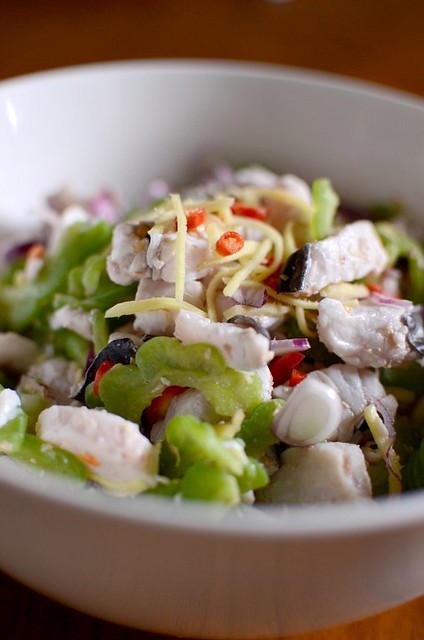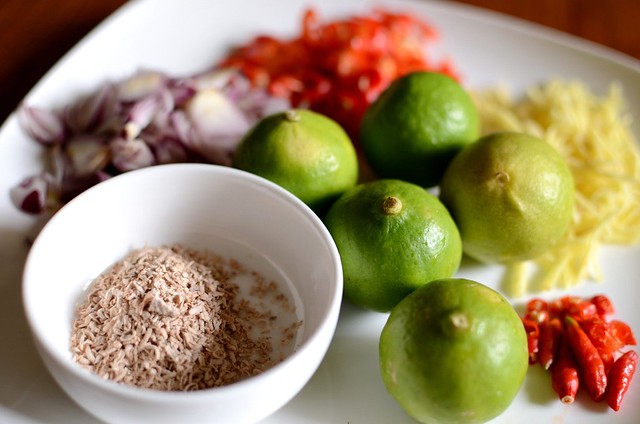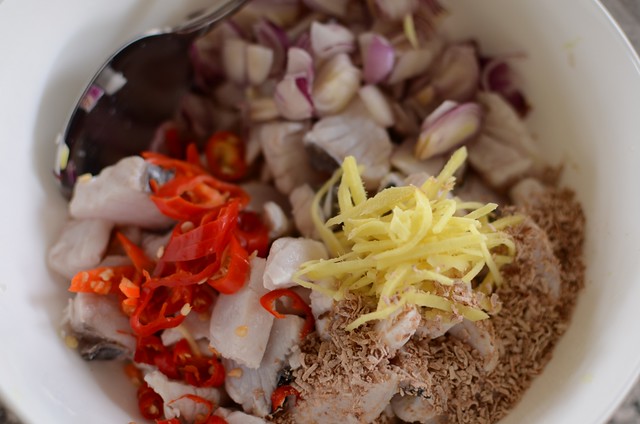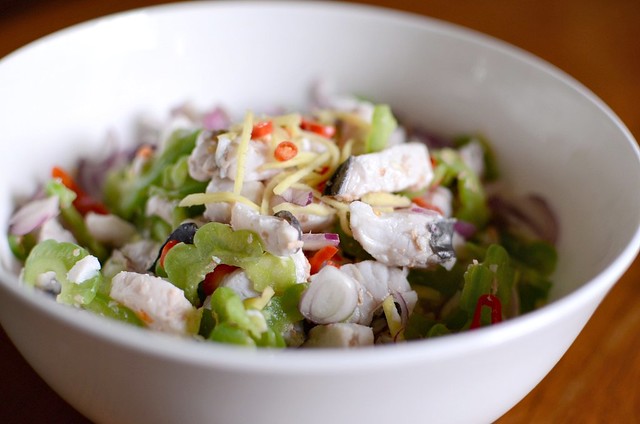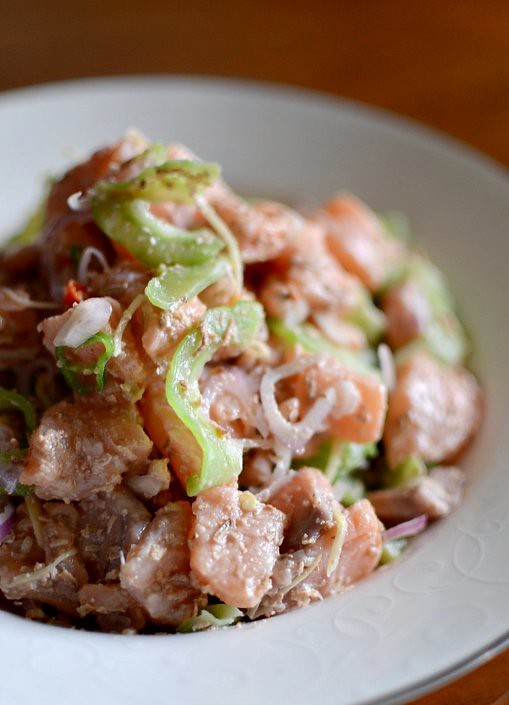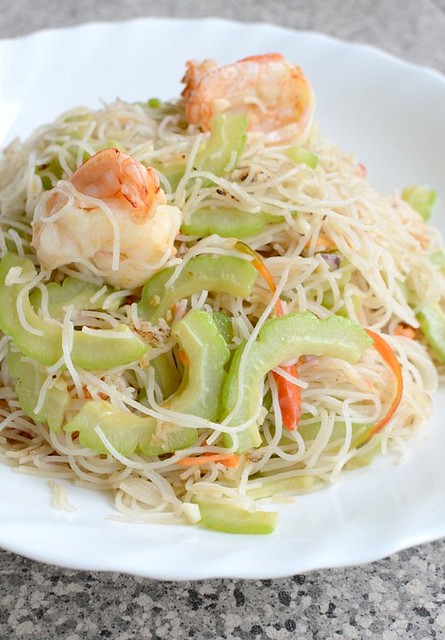
I love bittergourds and can't find enough ways to cook them. Stir-fried bittergourd with beef (traditional),
bittergourd fried with tomatoes, scrambled eggs with bittergourd (economical), stuffed bittergourd (yum),
bittergourd stewed with pork ribs (super yum), bittergourd fried with salted egg yolks (relatively new dish),
cold bittergourd salad (refreshing), crispy deep-fried bittergourd,Indian-style (too greasy and doesn't taste like bittergourd) and the acid test, bittergourd soup (oxymoronic but I like this only when the soup's not bitter). I'm so happy to discover another way with bittergourd. I was at a restaurant last week and the guy next table was eating a plate of fried
meehoon (rice vermicelli) with prawns and bittergourd. It looked so good. The pink of the prawns and young green of the bittergourd stood out against the white rice noodles. Noodles are usually fried with soy sauce to give flavor and white noodles are not common. In fact, white rice noodles can taste totally bland, just like white rice. To give it flavor, noodles fried without soy sauce must be fried at high heat to give it
wok hei ("breath of the wok," a flavor that's more of fire than smoke) and generously seasoned with msg to give it that savory-sweet
taste.
Instead of msg, I used Vietnamese fish sauce to give flavor and taste to my first plate of white rice noodles. My fish sauce is pretty aged and it colored the noodles, which I didn't like. I forgot to add in an egg which would help blend all the ingredients and balance the bitterness of the bittergourd.
The next plate of noodles was fried with beef instead of prawns. Beef gives better flavor and taste than prawns so I didn't use fish sauce. I remembered the egg this time and the plate of noodles was delicious, eaten with my favorite chili-lime-Maggi soy sauce dip. As with most stir-fried dishes, this dish tastes best fried at high heat so control and speed in frying is the key. If you are cooking more than the amount in the recipe, do not fry the dish in one go especially if your burner doesn't have a strong flame or the much desired charred flavor of
wok hei will not be in the noodles.
Fried Rice Noodles With Bittergourd (serves 2 to 3)
1/3 bittergourd (about 100 gm, or more), sliced very thinly
150 gm dried rice noodles (about 1/2 pkt)
8 to 10 medium-sized prawns, shelled or 150 gm beef tenderloin, in fine strips
1 red chili or a couple of bird's eyes chilies, chopped
1 egg
1 heaped t minced garlic
1 T fish sauce (very optional)
two pinches of salt
a pinch of msg (optional but recommended)
oil for frying
1. Soak the rice noodles in room temp water until softened, about 45 minutes.
2. Season the prawns with a pinch of salt and white pepper. If using beef, season with a pinch of salt, some white pepper and 1 teaspoon of corn starch. No soy sauce unless you want color in the noodles.
3. Drain the noodles well. Heat a wok and add 2 tablespoons of oil. Add the prawns/beef and fry for about a minute until just cooked. Push the prawns to the side of the wok and add another tablespoon of oil and add the bittergourd and a pinch of salt. Fry the bittergourd for about 1 minute (depending on the thickness and how raw you want them), push the prawns in to mix with the bittergourd and dish up onto a plate.
4. Add 2 tablespoon of oil to the wok, add the garlic and stir for 30 seconds. Throw in the noodles and add the fish sauce, salt and msg if using. Stir and toss to mix well. If adding egg, push the noodles aside, add a bit of oil and then crack in the egg. Scramble the egg, cutting it with the frying ladle and push the noodles in and mix well. If you like the noodles coated with egg, crack it onto the noodles and stir-fry using quick, short circular movement until the egg is dry. Add the chilies and the fried prawns/beef bittergourd mixture, stirring all the time to mix well. Taste and season if necessary. Dish up quickly before the bittergourd looses its green color and bite.
Eat with a sauce made of kasturi limes, bird's eyes chilies and Maggi soy sauce.




